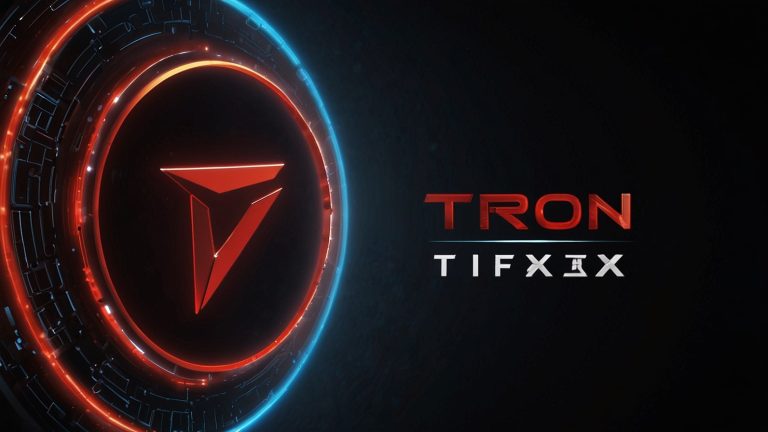In what is shocking, the tech markets around the world, the shares of Nokia Corporation have gone up by a shocking 15% in the early trading at the Helsinki Stock Exchange today, November 5, 2025.
The update about a revolutionary 6G network prototype that the telecom giant had come up with in partnership with the foremost research organisations in Finland is the fuel for the rally that saw the company’s stock price increase to EUR5.82 per share by midday.
The above not only puts Nokia at the centre stage of next-generation wireless technology, but it also highlights the rising prominence of Finland in terms of innovation in Europe. It was announced in a glamorous media conference at the Slush tech conference in Helsinki, at which Nokia CEO Pekka Lundmark described the capabilities of the prototype.
The 6G system is hailed as a game-changer in terms of connectivity and would have a data rate that is 100 times higher than existing 5G networks and ultra-low latency, which would allow real-time holographic communications and a complete interface with AI-controlled smart cities. Investors did not take long to reward the news, and the volume of the trade spiked 300% above average, with the institutional buyers entering in large numbers.
The Dawn of 6G: Nokia’s Finnish Roots Fuel Global Ambition
Finland has always been associated with the state of the art in telecommunications and this is what Nokia has just achieved. The company, which started as a pulp mill in 1865, made a decision to enter telecom in the late 20th century and became a household name until a sudden decline in the smartphone wars. Since 2020, Nokia has re-investigated its focus on infrastructure, investing billions in beyond-5G research and development under the leadership of Lundmark.
The revelation today is the result of a joint venture between a three-year partnership between Nokia, Aalto University and VTT Technical Research Centre of Finland, with an amount of EUR500 million. The prototype, which was tried in a controlled environment in Espoo, proves terahertz frequency ranges which circumvent conventional spectrum constraints.
According to Lundmark, who proclaimed it as the creation of the invisible backbone of the digital economy of tomorrow, the technology can reduce energy use by 90%, compared to existing systems, and can build networks where a third of the world is connected through this technology.
This isn’t mere hype. The first demonstrations displayed uses such as instantaneous remote surgery through augmented reality overlays and groups of autonomous vehicles communicating with each other with no dropped signal whatsoever.
In the case of Finland, a country of only 5.5 million people with an insatiable demand for tech exports, such a breakthrough will not only support the EUR10 billion annual ICT industry but also its economy. Nokia, with its workforce of more than 20,000 Finns, is investing EUR200 million to scale down its operations at its Oulu plant, which may lead to 2,000 high-tech jobs by 2027.
Market Frenzy: Helsinki Exchange Top of European Rally
Nordic tech was already on fire this morning, with the Helsinki Stock Exchange commonly serving as a tracking mechanism. Nokia OMXH: NOKIA ticker was the first to take the lead, beating off-hours Asian trading of other similar companies like Ericsson and Huawei.
Analysts attribute the 15% pop, which added EUR4.2 billion to the Nokia market cap overnight, to the combination of factors: pent-up demand for 6G, geopolitical factors favouring the suppliers in Europe over Chinese competitors, and rumours of coming EU subsidies of green technology.
Wider indices were trembling with it. The OMX Helsinki 25 rose 2.8% its best increase since the AI boom of 2024. The U.S. and Japanese investors, through ETFs such as the iShares MSCI Finland, poured money into, speculating on the patent portfolio of Nokia, since with more than 3,000 filings in the 6G area, it is now its moat against its rivals. This is Nokia getting back its throne, said one London-based fund manager, who increased positions before it was announced.
Yet, not all is rosy. The nursing losses of the pre-event dip and the scramble for covers by short-sellers increased the volatility. At the local time of 2 PM, the shares had stabilised at EUR5.65; however, still up 12% on the day. Currency was a welcome boost, with the euro gaining 0.5 per cent. on the dollar, driven by new investment into Finnish stocks.
Expert Insights: Why 6G Could Redefine Nokia’s Playbook
Telecom veterans are glowing with apprehensive confidence. Dr This prototype came as a quantum leap according to Liisa Kuitunen, a professor in Tampere University who teaches wireless systems, with its adaptive beamforming algorithms, which self-optimise, being able to skip the clutter in urban environments.
The cold climate and sparsity of Finland was a perfect testing ground, she said, because it was thought that pure signal transmission across snow-covered tundras would work, which would be applicable to domains of the country, materials science.
Nokia has recorded 7% growth in revenues in Q3 last month to reach EUR5.6 billion, particularly boosted by network sales. The current news may give that direction a shot of adrenaline, and it is predicted that the 6G contracts will reach EUR20 billion by 2030.
Sceptics, however, cite regulatory obstacles: The International Telecommunication Union is not going to standardise 6G until 2028, which leaves it open to delays. There is a high risk of execution -Nokia has to manoeuvre through spectrum auctions and interoperability standards, cautioned a Brussels-based policy analyst.
Dividends appear attractive to the shareholders. According to Morningstar, Nokia has a forward P/E ratio of 14x, which underestimates its potential growth. Activist investors, who have demanded spin-offs previously, now find unity: the renewed board commitment to core R&D will put to rest fears of diversification error.
The Tailwind of Geopolitical Trends: Europe Bets on Home-grown Tech
The U.S.-China tensions will not be the complete story about Nokia’s increase. European companies such as Nokia can benefit as a result of the friendsoring brought about by Washington tightening its export controls on advanced chips.
The EUR95 billion Digital Europe Programme of the EU, where tenders to 6G will be open next quarter, expressly focuses on consortia that include Finnish and German performers. An anonymous EU commissioner referred to Nokia as enhancing digital sovereignty in Europe, saying that it is strategic autonomy in action.
With its usual diplomatic silence, Finland plays on its neutrality. President Alexander Stubb, a virtual attendee at Slush, tweeted that he liked the Finnish ingenuity that drove global progress. On the domestic level, the news aligns with green efforts: the 6G design of Nokia has recyclable antennas and AI-optimised power grids, which are in line with Finland’s carbon-neutral-by-2035 commitment.
For rivals, it’s a wake-up call. Ericsson, the Swedish rival of Nokia, shares fell 3% in Stockholm and there was speculation of a counter-bid to Aalto alliances. Western markets isolate Huawei, which becomes obsolete with the sanctions. Smaller Finnish firms, such as Reaktor and Vincit, had the opportunity to jump on the coattails by selling software layers on top of Nokia equipment.
Looking Ahead: Challenges and Opportunities in Nokia’s Horizon
Questions remain as the sun sets on this landmark day. Does Nokia have the capability of turning prototype buzz into business victories? Supply chain snarls, including the rare-earth and fab capacity, are giant.
Oulu labour unions are already making demands of increment in wages on the expansion, and environmental organisations are investigating the environmental footprint of the terahertz technology.
Optimism prevails, though. The current targets of Wall Street have scaled down to EUR7.50 by the end of the year, which is a 30% upside. Millennial traders, through apps such as Nordnet, rushed in, with Nokia being a meme-stock adjacent play, but without the volatility, according to retail investors. Long-term belief was indicated by heavyweights in the institutions, such as BlackRock.
The HQ of Nokia shines in the dim autumn light of Helsinki, a source of hope. Since the beginning of the wood pulp, to wireless waves, the company has been on a journey, and 6G is the bravest chapter ever.
In Finland, it is not so much about ticking a stock but rather a story of a small country punching above its weight in the competition of giants. When Lundmark concluded his address, he said, The future isn’t coming, it’s connecting. And today, the world listened.
Ecosystem Boost Ripple Effects Nokia Finnish Startup
In addition to the blue-chip glow, the company has given Nokia a boost to the vibrant startup culture in Finland. The startup ecosystem in Helsinki is EUR15 billion-rich, and it is telecom adjacency-based.
Some companies, such as Silo AI, which makes edge computing, have claimed that inbound queries triple after the announcement, and are looking to be integrated with the low-latency stack at Nokia. “6G is not pipes; it is the OS to innovation, quipped the Silo CEO Peter Sarlin.
Capital investment came in this manner. Local VCs such as Lifeline Ventures raised a EUR100 million fund on 6G enablers, and Nokia scouts are on advisory boards. It is also extended to education: the number of students taking Aalto wireless engineering shot 40% last term, spewing out talent ready to be recruited by Nokia.
Challenges persist. Top grads are tempted to go to Brain drain to Silicon Valley, but incentives such as tax breaks for R&D companies are meant to keep the tide down. Gender equality in technology, which is a Finnish strength, may become even faster: 25% of the 6G teams at Nokia are led by women, according to the company data, and it encourages various problem-solving approaches.
Global Implications: The Road to Ubiquitous Adoption of 6G
With the milestone that Nokia has achieved, the race for 6G becomes quicker across the world. South Korea targets pilots by 2026; Japan, NTT Docomo hunts European deals. In the case of developing markets, cost-effective 6G may be used to close digital gaps, allowing precise agriculture in Africa through base stations sold by Finnish companies.
Sustainability cuts across it like a red line. The e-waste generated by Nokia is reduced through the use of modular design, which can be recycled within less than 24 hours. This sounds in the ethos of the circular economy in Finland, in which 60% of the electronics are reused every year.
Day traders and other pension funds are among the shareholders enjoying the momentum. The number of options turned out to be a record in New York on Nokia ADRs, with calls surpassing puts 5:1. With evening trading just ahead, it is no secret that November 5, 2025, is the day of Nokia’s resurgence, the best day in the wireless wars in the history of Finland.











 Bitcoin
Bitcoin  Ethereum
Ethereum  Tether
Tether  XRP
XRP  USDC
USDC  Solana
Solana  Lido Staked Ether
Lido Staked Ether  TRON
TRON  Cardano
Cardano  Avalanche
Avalanche  Toncoin
Toncoin